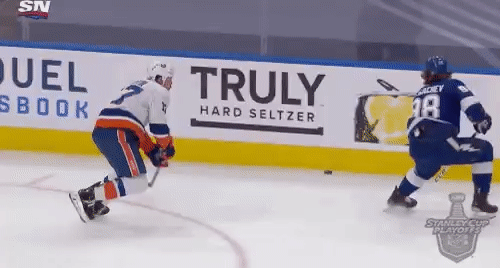The 2F3D Project:
Part 1) Inverting the (Hockey) Pyramid
Part 2) Breakout & Transition
Part 3) OZ activation
Part 4) The 2F3D system package (series finale)
Play 1: Wide Activation
In Game 1 of the TBL-NYI series, Tampa’s Ryan McDonagh scored the eventual game-winner on a neat offensive-zone sequence:
Keep reading with a 7-day free trial
Subscribe to Hockey Tactics Newsletter to keep reading this post and get 7 days of free access to the full post archives.



